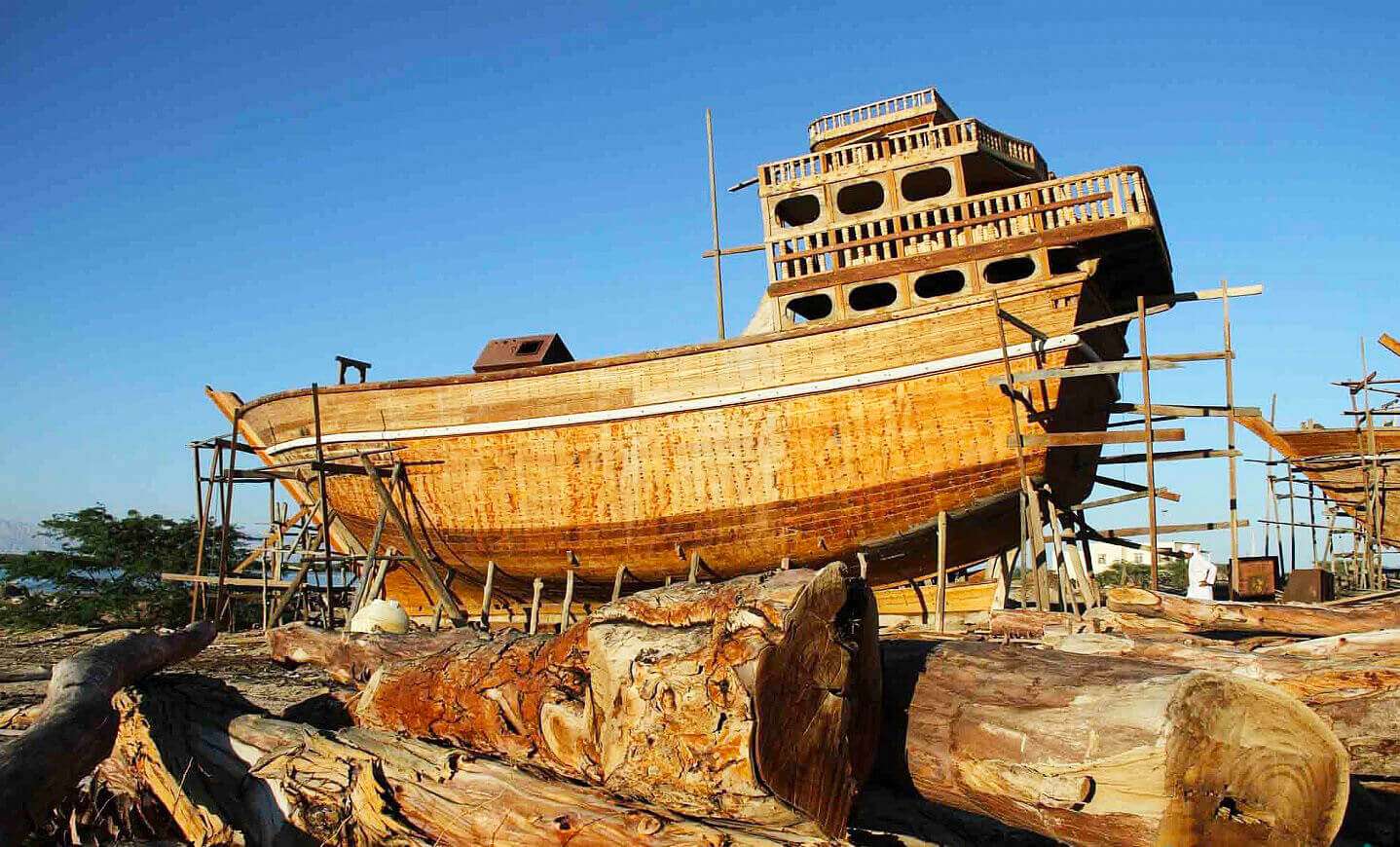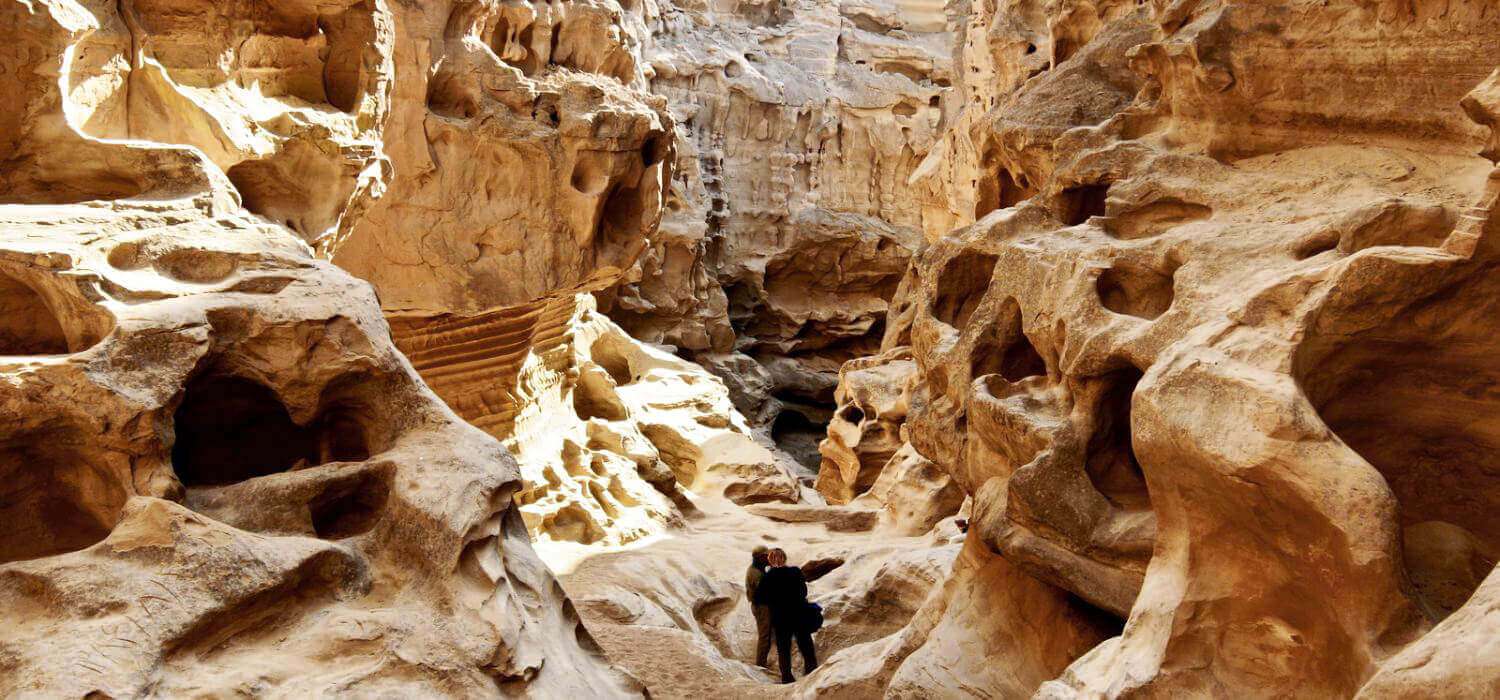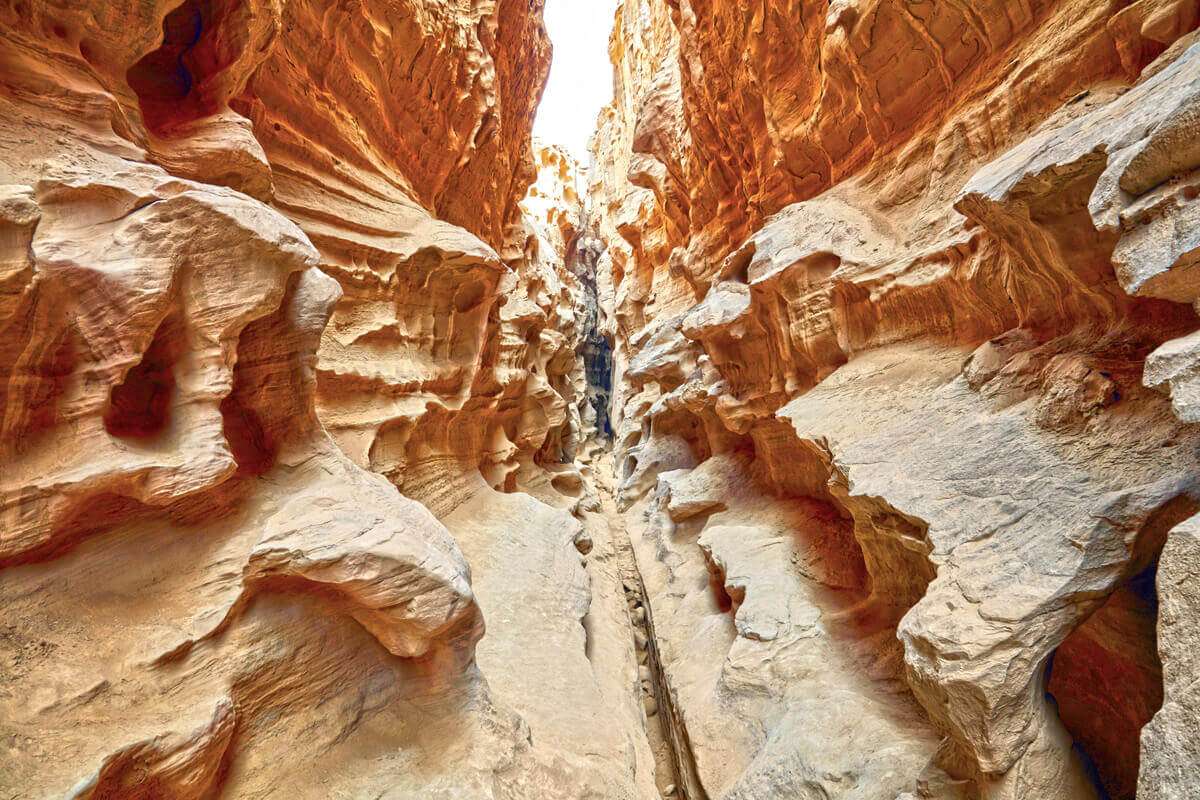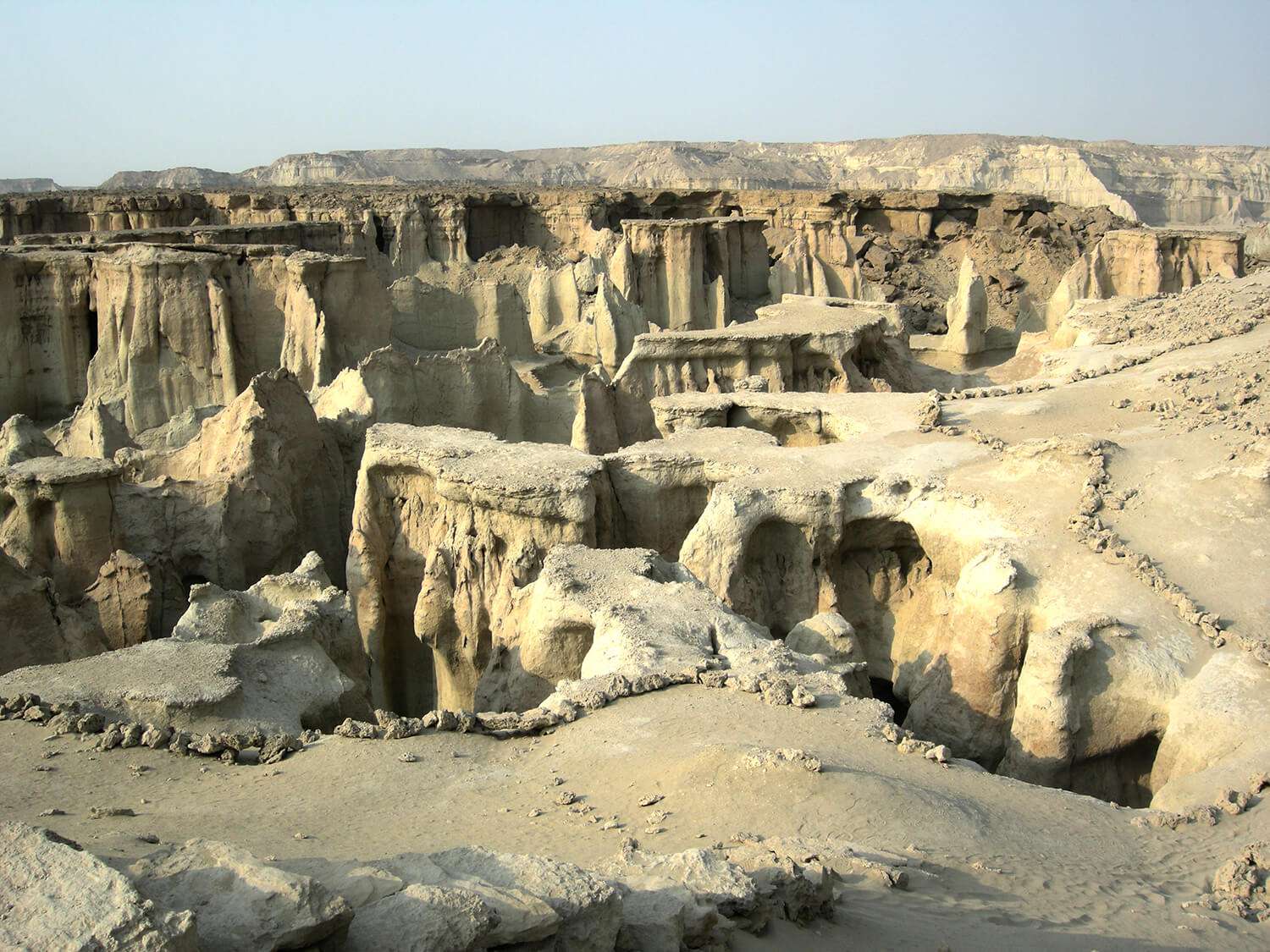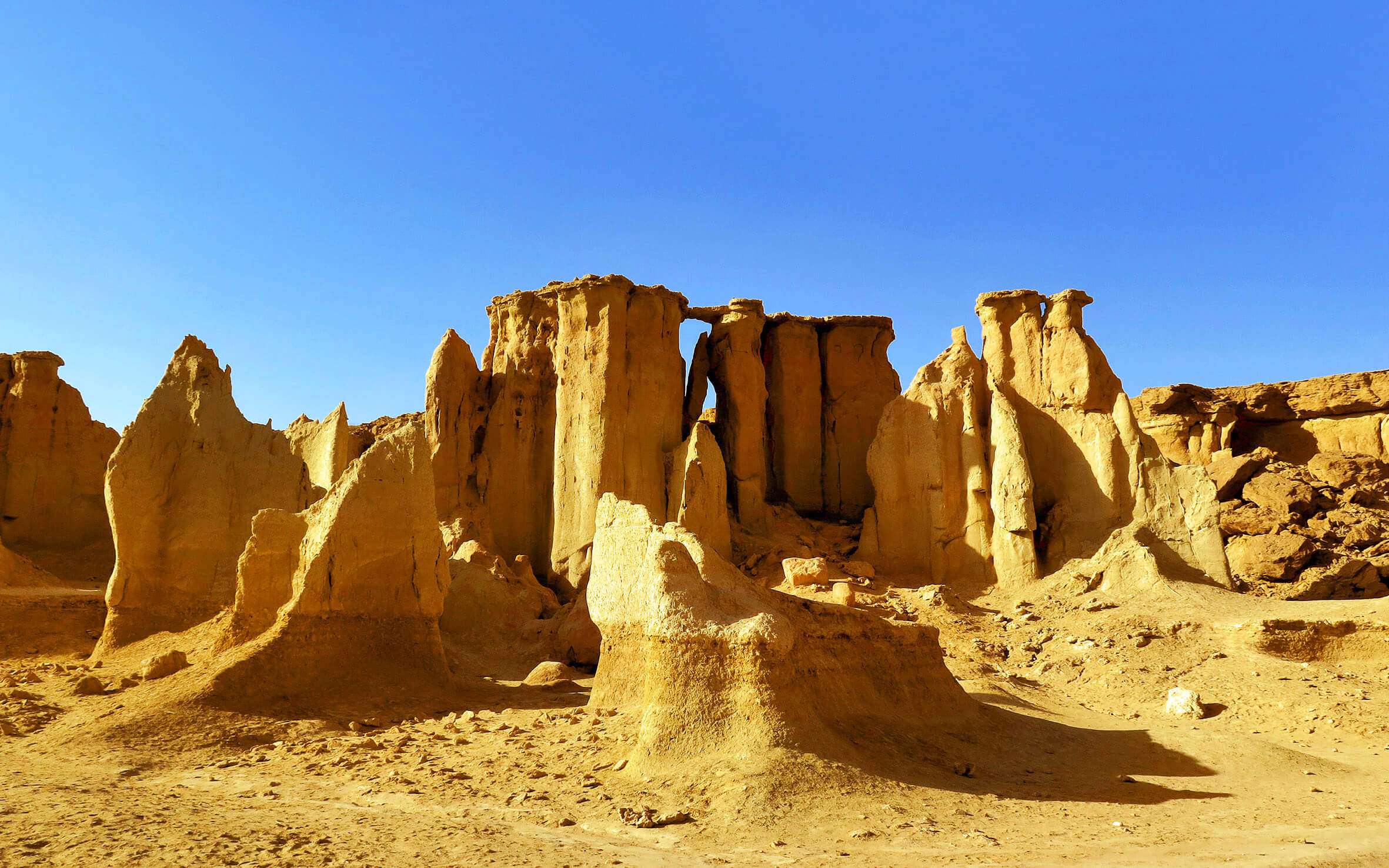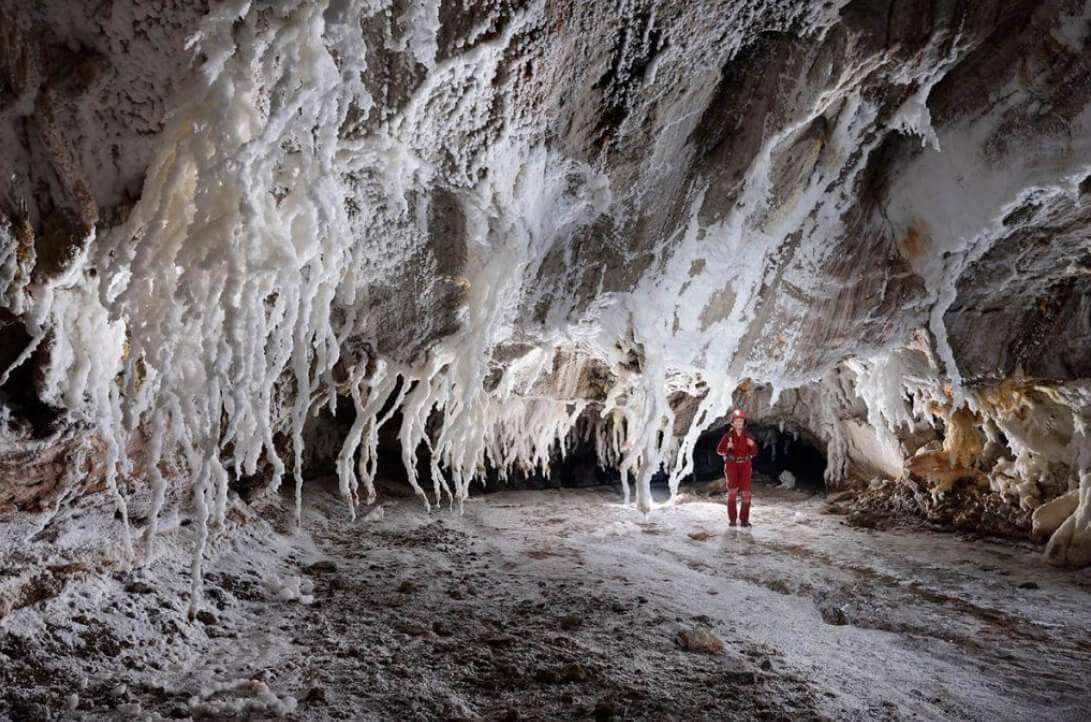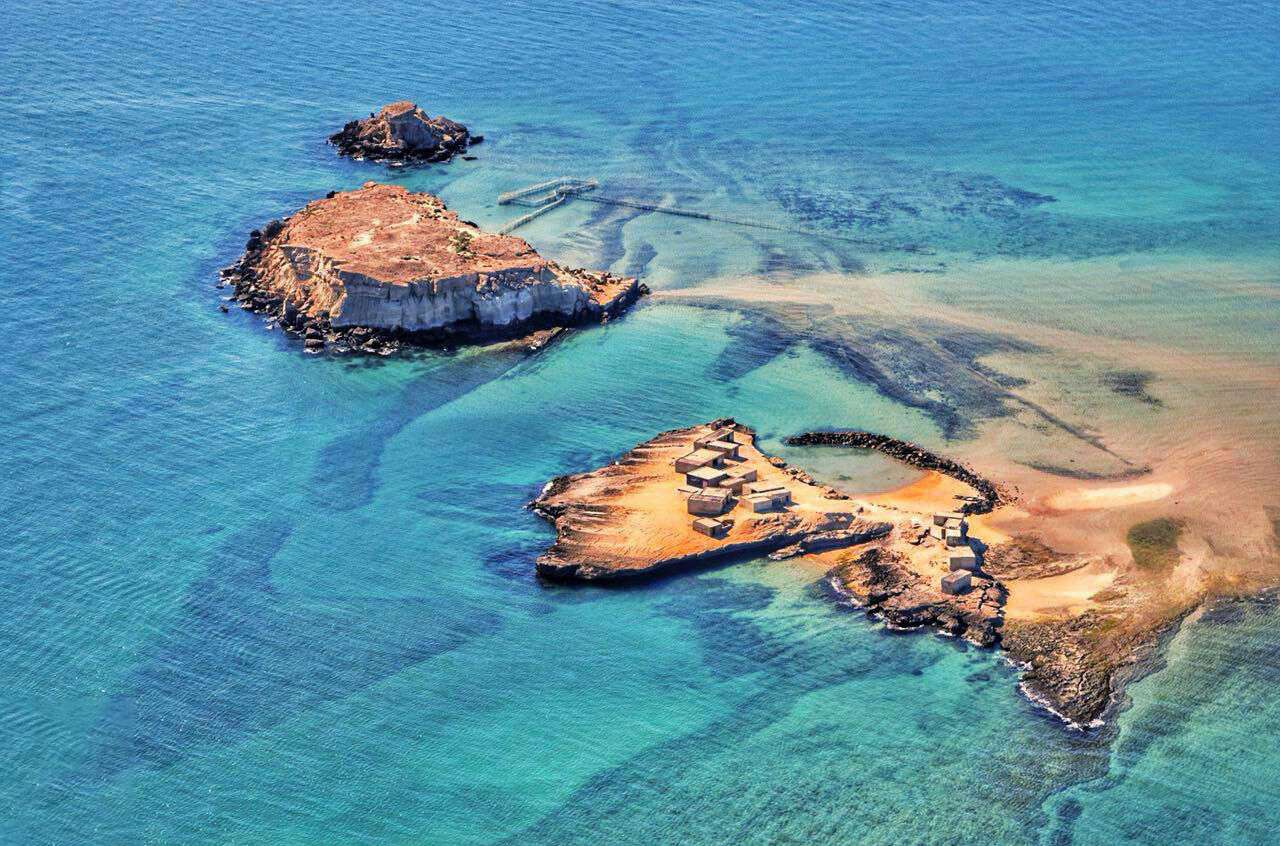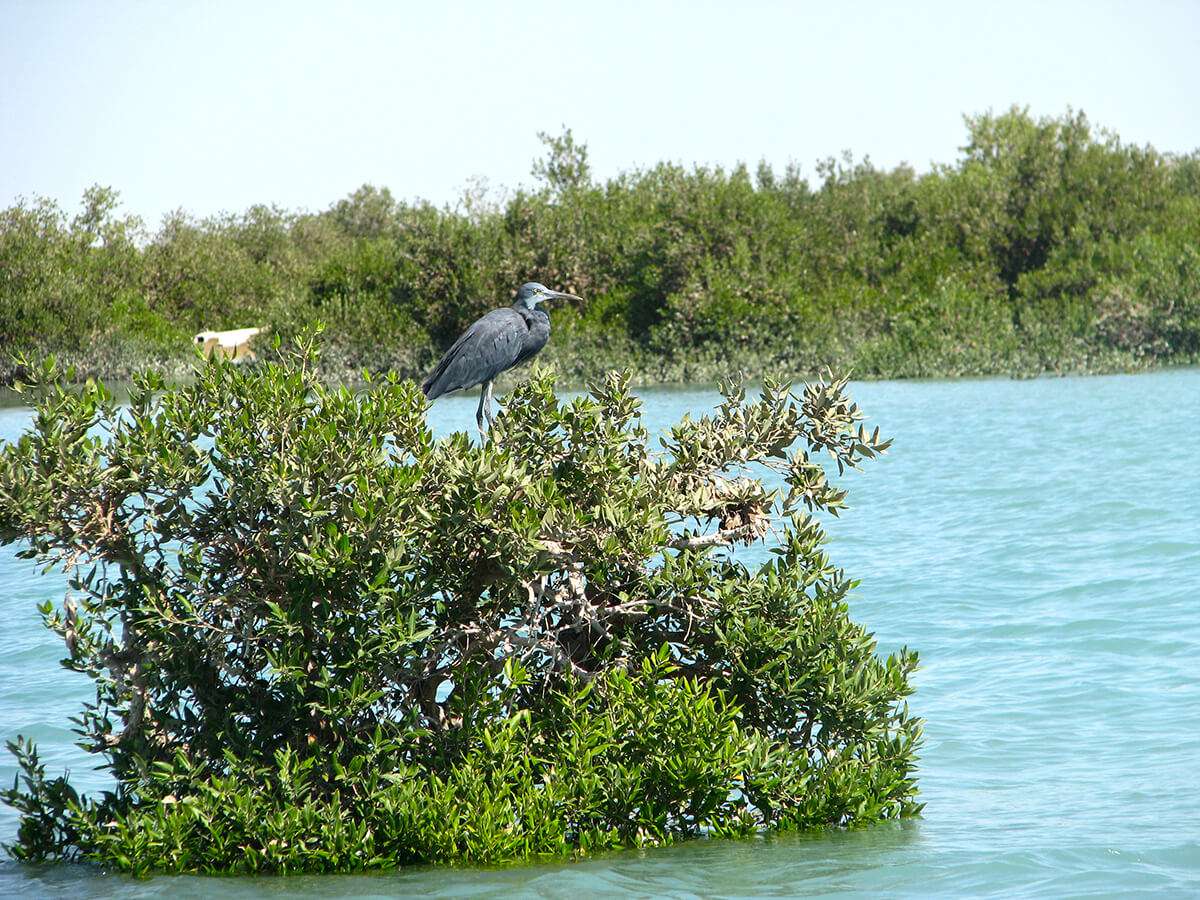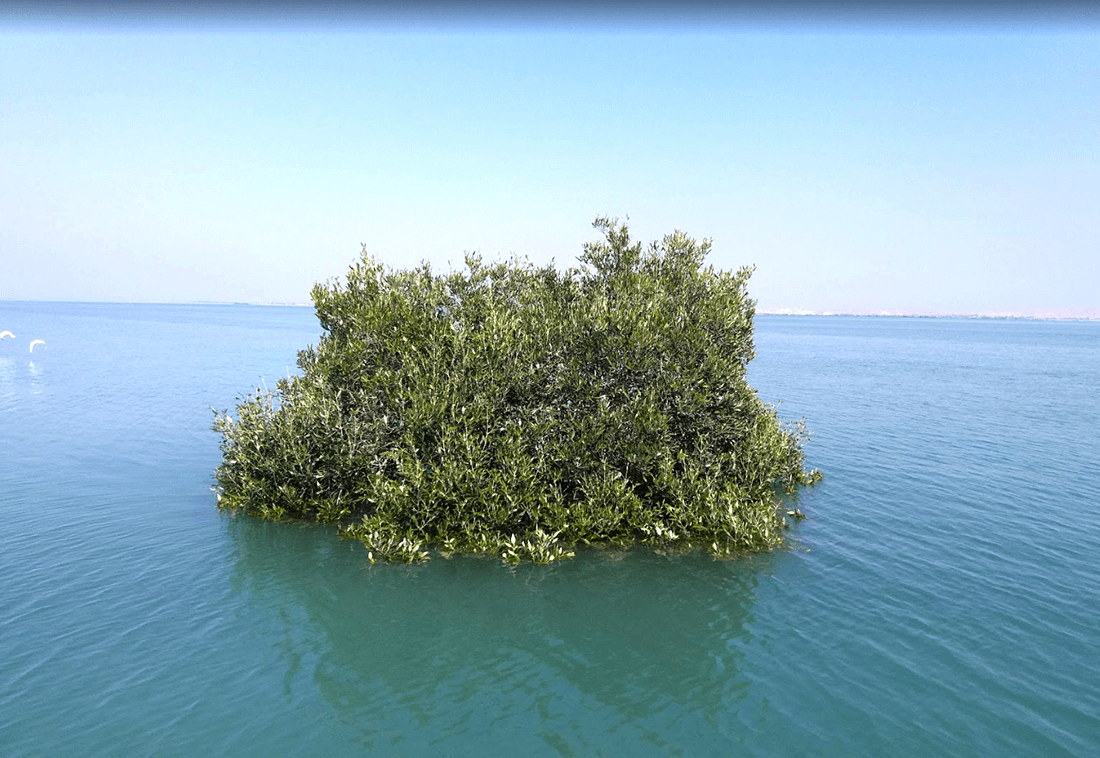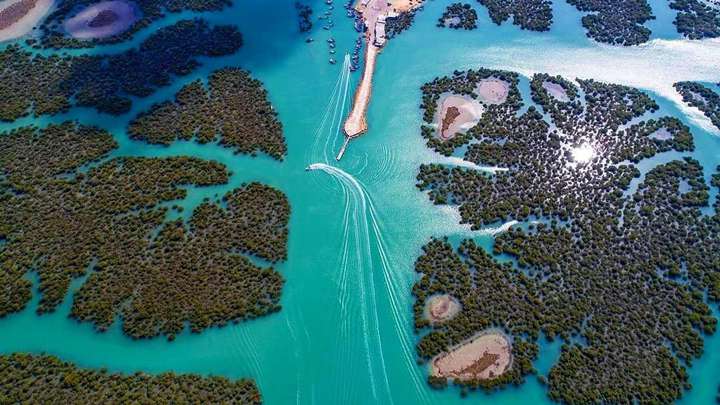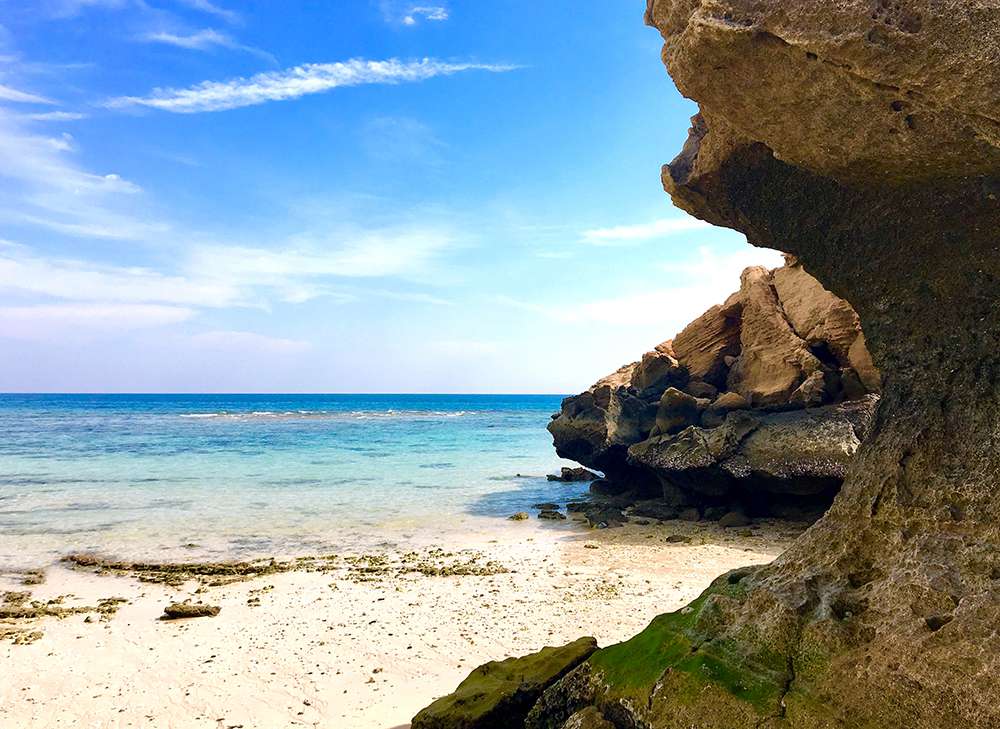Top Placese in Qeshm Island
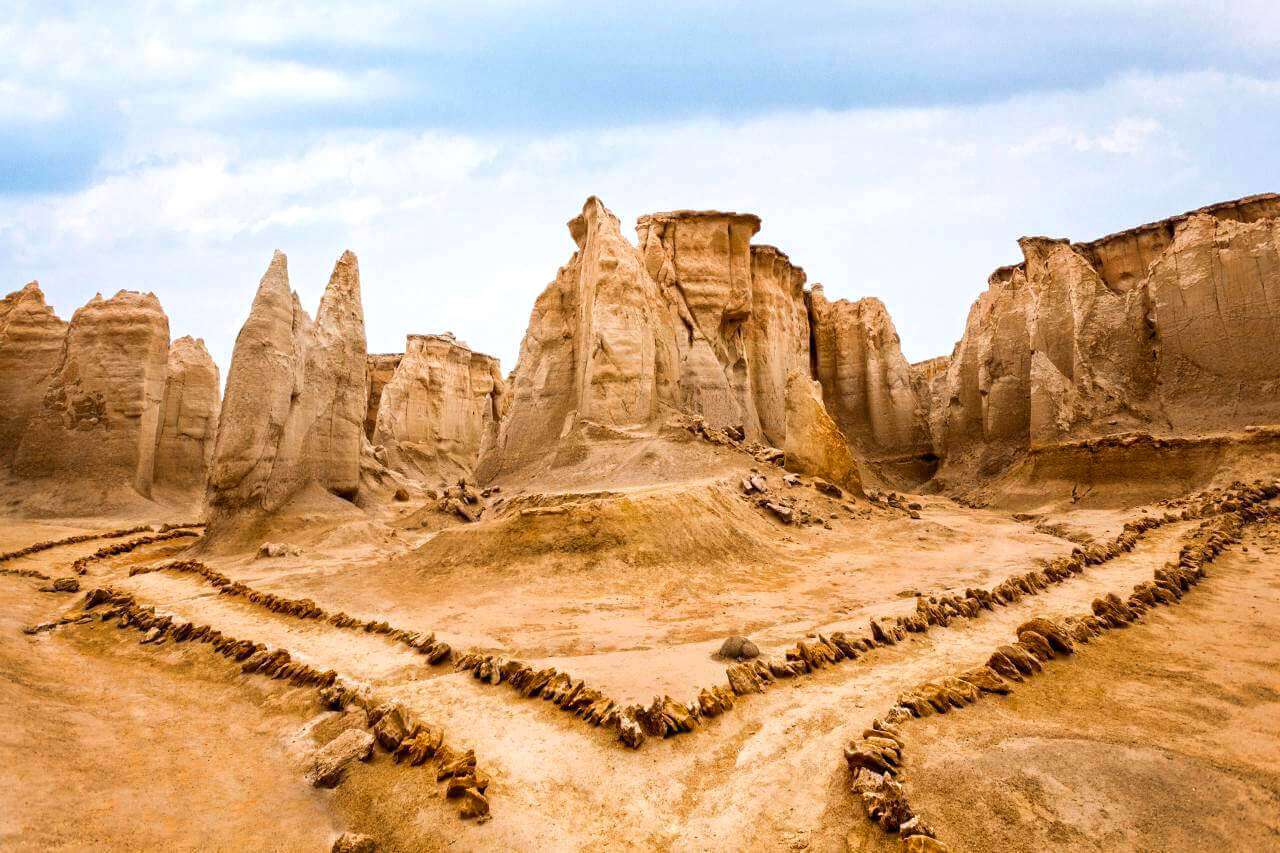
- Visiting
Top Placese in Qeshm Island in Qeshm
- ThemeNature & Adventure
- CodeIRSG2160
- Duration24 hr(s)
Exploring the largest island of the Persian Gulf comprising top sightseeing such as Namakdan Salt Dome and Salt Cave, Stars Valley, Chahkooh Canyon, and Hara forest
- Spring
- Summer
- Autumn6:00-19:00 *
- Winter6:00-19:00 *
* Best Time
Photos of the Top Placese in Qeshm Island
Explore the Top Placese in Qeshm Island
Qeshm Island
Qeshm Island, also known as Qishm or Kishm, the largest island in the Persian Gulf (ca. 122 km long, 18 km wide on average, 1,445 sq km), is located in the northwest of the Strait of Hormuz. Qeshm Island features an irregular outline and a generally rocky coast except for sandy bays and mud flats carpeting the northwest. The island, which comprises 65 hamlets and 3 towns, is home to more than 100,000 people speaking Farsi as their first language and following Sunni Islam as their religion.
Thanks to its strategic position, Qeshm has always had an exceptional and extraordinary status throughout its history since the Elamites and has undergone various changes and evolutions since then. The British, the last occupant of Qeshm, set up a strong base for boosting their navy in the Gulf, as well as storage facilities for their ships during the Second World War, after which they abandoned their activities in the island. After the Islamic Revolution, Qeshm gained a high significance and was recognized as the second free trade zone in 1989.
Qeshm Island has plenty of natural and tourist attractions, from pristine islands and untapped coral reefs to long-standing forests, high valleys to deep caves, and all the wildlife and cultural assets in between. Among eye-catching attractions in Qeshm island stand Hara forests as the precious ecological mangrove tree resources, the Valley of stars, Khorbas cave as an outstanding work of rock-out architecture, Hengam Island, Naz Island, Naderi castle, and so many other beauties and wonders just left to be discovered by your curiosity.
Highlights
- Namakdan Salt Dome and Salt Cave
- Valley of Stars
- Chahkooh Canyon
- Hara Forest
One of the spectacular attractions in Qeshm Island is Namakdan Salt Dome and Salt Cave which are considered among the seven wonders of the Persian Gulf. Namakdan Salt Dome is located 90 km away from the city of Qeshm, on the southwestern coast of the Qeshm Geopark and is 237 meters above sea level.
Namakdan Salt Dome is the result of natural activities in which, huge salt masses move toward the surface of the earth due to their lighter weight in comparison with the weight of their surrounding structures and then jog out of the openings or weak points on the surface of the earth as salt domes. As rainwater gradually penetrates the salt domes through their crevices, it dissolves the salt and enters the dome forming different geological structures like salt falls, salt springs, and salt caves. In the southern part of the Namakdan Salt Dome, there are a number of salt caves, with their average height reaching up to 20 meters. According to the excavations made, Namakdan salt cave number 3 is now considered as the longest salt cave in the world with a length of 6400 meters and 570 million years of age, dating back to the Cambrian era.
The overall shape of the Qeshm Salt Cave is a curved bow and its entrance wall is covered by colorful strips of salt and various layers of minerals such as hematite and oligist. In addition, in some areas where water has found its way to the ground, some beautiful ponds have been formed with salt crystals. These are indeed the gift from the depth of the earth brought to the surface through the rise of the Salt dome.
Magical stalactites and stalagmites, as well as salt crystals (such as needle-shaped, round, or multi-facet) formed by sedimentation of salt, are visible from the first twist of the cave, which gradually increase as one move toward the end of the cave. From the halfway to the end of the cave, salt crystals carpet the floor, forming salt streams which offer a magnificent view to the visitors.
The permanent underground flow of water and salt opens its way out of this cave into a natural white pond with a depth of 1 meter which serves as a salt spring. This stream flows permanently throughout the year and has medical properties for the treatment of many diseases, including asthma and respiratory distress. Sometimes the snowy- like salt water acts as a mirror reflecting the beautiful image of the cave and creates a magical scene of the surrounding area.
On the northern edge of Qeshm Island, near Berkeh-ye Khalaf village, a wonderful geological attraction awaits you. Stars Valley or Dareh Setāregān (in the Persian language) is a rocky valley, with a depth of 15 meters, which was subject to erosion by wind and rain for long years. As a result of this process of erosion, the natural form of rocks turned into statue-like formations at the hands of nature. Nowadays, this valley forms part of the Qeshm Geopark, and one of the most visited sights in the Island. This geological phenomenon dates back to the Cenozoic period, about 2 million years ago.
However, locals believe that a star or a meteorite fell into the valley and formed these pillar-like statues in the shape of gigantic animals or scary creatures. That’s why they call it the valley of stars. When the wind passes along the rocks, a scary sound is made which local people attribute it to wandering ghosts passing through the valley.
No local dares to enter this valley after sunset; it is time for genies to get active.
Therefore, choose a time when there are not many tourists in the valley, be present there at sunset and wait for the genies to come.
The trip to Qeshm Island brings you to the most unique and alluring natural attractions and wonders, but the adventure remains untapped without visiting Chahkooh Canyon or Chahkooh Valley (Tange Chahkooh) which stands alone in beauty and mysteriousness among the seven wonders of Qeshm Island. Chahkooh Canyon is located in the heart of the rocky and monolith southern part of Zagros mountain ranges, on the west of the northern coast of the island and 70 km from Qeshm. Chahkooh Canyon is located in Qeshm district of Shahab in the vicinity of Chahui village.
Chahkooh Valley had been initially formed as a result of a big fracture in a large anticline leading to natural perpendicular valleys of sometimes 100 meters depth and up to 20 meters height embellishing with cavities, grooves, holes, sea-like features like shells, and appealing unusual geometrical shapes formed by the dance of wind and water erosion over time that catches staring eyes of every viewer.
Chahkooh sedimentary walls are composed of sandstone between the layers of red marl, silt, and limestone. The presence of these materials makes the walls susceptible to erosion and dissolution, to the point where deep cavities are found in many places. There are several parallel erosion lines on the walls, which, in some places create funneled or spathulate shapes due to their depth.
As you enter the valley entrance, the first thing you encounter is a natural statue known as the "Three-Head Guard", welcoming you to the cavity. Then you come across four wells dug by residents in the valley to allow fresh water storage. The Chahkooh Canyon was very generous to the people to provide them with water supply and that’s why they call this cavity Chahkooh (literally meaning a Mountain Well) where you can drink the fresh water and wash your hands as well. As you pass by these wells, you are enchanted by natural masterpieces of niches, statues, and recesses, each of which stops you to think about their creation. Gradually the relatively high vertical walls will separate you from the outer world and present you with a number of parallel and deep grooves and erosional lines, as well as semi-spherical and elliptical cavities to the point you can hardly pass through as the distance between the walls become shorter. The rocky cliffs on the valley add to the magnificent miracle of Chahkooh and make you wonder at the beauty of this natural phenomenon. This is a good opportunity to take some memorable pictures of this magnificent place.
The valley has four canyons on four sides, the main valley and the valley perpendicular to it forming a sort of crossroads. That is, after entering the valley, on its traverse, you will see two crevices on each side, each of which guides you to a valley with new features. If you enter the North-south part of the valley, you will encounter a wider, slower, U-shaped valley. As you advance southward, you will feel the decrease in width and increase in slope at the end of where the valley becomes V-shaped and impassable. Only with some rock-climbing equipment, it is possible to reach this part, making it an interesting adventure for rock climbing lovers.
If you can visit Chahkooh Canyon, we suggest you go to the end of the canyon and visit its extremity where the temperature differs from the rest of the canyon for about 10 degrees and colonized by the nest of birds and beehives hidden from human sight.
The mangrove forests of Qeshm or Hara forests are among the wonders of Qeshm Island, located in the Strait of Khavaran, between Qeshm Island and Hormuzgan Province, in the south of Iran. These forests are not specific to Qeshm Island, as they also extend to Port of Pohl, the Hormuz Island, and Khamir Port. Covering an area of about 2,400 hectares, the Hara Forest of Qeshm is the largest forest among Iran's 8 Hara forests. The Hara forests constitute a national protected area and an international lagoon, registered as UNESCO biosphere reserves.
Locally known as “Hara” or “Harra”, the scientific name of this mangrove plant is Avicennia Marina, after the great Iranian Physician and biologist (Abu Ali Sina or Avicenna). Some local people believe that the trees are a work of miracle created by the tears shed by Adam.
The Hara Forest has some exceptional features that exceed our common knowledge about forests with dense and congested trees. This is actually the home of salt-friendly 3 to 8 meters tall mangrove trees with external roots, which grow in tropical and sub-tropical coastal regions (rivers, estuaries, and bays). During the high tide, the trees get partially submerged in water, then reappear during low tide just for a few hours (for the exact tidal time refer to this site). All these ecological conditions also provide the best natural environment for some marine species such as reptiles, aquatic snakes, arthropods, fish species, and migratory birds including herons, flamingos, pelicans, and angler eagles.
Another wonderful fact about Hara Forest is the natural filtration system of the root of the trees which refine the salt water and produce fresh water, making the forest independent of freshwater. This property is formed by natural selection over millions of years.
These trees play a vital role for indigenous people in producing lumber, charcoal, paper pulp, honey, artificial silk, alcohol, and sugar. They also have medical and cosmetic uses.
Boating tour is very popular among tourists who want to visit the Hara Forest. Imagine riding a boat and moving in the turquoise-blue water of the Persian Gulf. In the beginning, everything is like a normal boat ride until you are surprised by a new landscape surrounded by trees floating on the water. In some main waterways, you may be astonished by the presence of dolphins swimming among the trees. Watch cautiously not to disturb the tranquility of the place so that you may be able to take a memorable picture from these playful animals or some beautiful birds nesting on top of some trees.
Important Information
Additional Info
Local house in Qeshm• When to go
- The best time to visit the Qeshm Island is autumn and winter when the weather is moderate.
• How to go
- Qeshm Island has an international airport.
- In order to reach the island (other than using direct flights), you can go to Bandar-e Abbas (Shahid Haghani
Port) where you can hire a sea-bus from 6 A.M. to 11:30 P.M.
- If you have a car you should go to Bandar-e pol in Bandar Abbas where landing crafts carry passengers and their vehicles to the Qeshm Island.
It takes about 30 minutes to reach Qeshm.
• Contact Information
- Shahid Haghani Port: 00987632237781
- Zakeri pier: 00987635225536
- Qeshm international airport: 0098735335010
• Where to stay
- You can stay at hotels in Qeshm and Dargahan. However, there are local houses in Qeshm or Dargahan, which are equipped with proper facilities and are run by local families. It is also possible to pitch a camp in exclusive areas.
Local houses in Qeshm

Cost Info
- Seafood dishes and Kalamuk in Croll Restaurant3 €
- Tomoshi bread with honey or Sooragh sauce in Tomoshi Traditional Bread Bar3 €
- Seafood dishes in Golden Food Restaurant3 €

